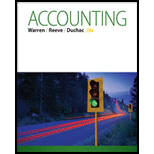
(a)
Profit margin: This ratio gauges the operating profitability by quantifying the amount of income earned from business operations from the sales generated.
Formula of profit margin:
Investment turnover: This ratio gauges the operating efficiency by quantifying the amount of sales generated from the assets invested.
Formula of investment turnover:
Formula of ROI according to Dupont formula:
Return on investment of MN Segment, PR Segment, SE Segment, and CP Segment, using Dupont formula
(a)
Explanation of Solution
Determine ROI of MN Segment, if income from operations is $6,818,000,000, sales are $20,356,000,000, and assets invested are $28,627,000,000.
Determine ROI of PR Segment, if income from operations is $2,220,000,000, sales are $14,087,000,000, and assets invested are $22,056,000,000.
Determine ROI of SE Segment, if income from operations is $661,000,000, sales are $5,979,000,000, and assets invested are $14,750,000,000.
Determine ROI of CP Segment, if income from operations is $1,112,000,000, sales are $3,811,000,000, and assets invested are $7,506,000,000.
(b)
To explain: The differences in profit margin, investment turnover, and return on investment of MN Segment, PR Segment, SE Segment, and CP Segment
(b)
Explanation of Solution
The following are the differences in profit margin, investment turnover, and return on investment of MN Segment, PR Segment, SE Segment, and CP Segment:
- Profit margin and investment turnover of MN Segment are high comparably, with 33.5%, and 0.71 and producing high ROI of 23.8%.
- Investment turnover of SE Segment is very low comparably and produces low ROI of 4.6%.
- CP Segment stands in the second place with 29.2% profit margin and produces ROI of 14.9%.
- PR Segment stands in the third place with 0.64 investment turnover and produces ROI of 10.1%.
Want to see more full solutions like this?
Chapter 24 Solutions
ACCOUNTING,CHAP.1-13
- What is the unit variable cost?arrow_forwardDuring June, the production department of a process operations system completed and transferred to finished goods a total of 82,000 units of product. At the end of May, 18,000 additional units were in process in the production department and were 70% complete with respect to materials. The beginning inventory included a materials cost of $92,400 and the production department incurred a direct materials cost of $276,800 during June. Compute the direct materials cost per equivalent unit for the department using the weighted-average method. Helparrow_forwardPlease solve this question General accounting and step by step explanationarrow_forward
- When should modified absorption methods replace traditional costing? a. Complex overhead structures demand specialized allocation b. Direct costs tell the whole story c. Standard absorption works everywhere d. Overhead allocation needs no changesarrow_forwardPlease provide the correct answer to this general accounting problem using accurate calculations.arrow_forwardWhat is the cost of goods sold for harry styles supplies for the period ending 31 December 2XX5?arrow_forward
- See an attachment for details General accounting question not need ai solutionarrow_forwardCan you help me solve this financial accounting question using valid financial accounting techniques?arrow_forwardPlease provide the solution to this general accounting question using proper accounting principles.arrow_forward
- Given 100% solution for general accounting question please given fastarrow_forwardCan you show me the correct approach to solve this financial accounting problem using suitable standards?arrow_forwardPlease given correct answer for General accounting question I need step by step explanationarrow_forward
 Managerial AccountingAccountingISBN:9781337912020Author:Carl Warren, Ph.d. Cma William B. TaylerPublisher:South-Western College Pub
Managerial AccountingAccountingISBN:9781337912020Author:Carl Warren, Ph.d. Cma William B. TaylerPublisher:South-Western College Pub Financial And Managerial AccountingAccountingISBN:9781337902663Author:WARREN, Carl S.Publisher:Cengage Learning,
Financial And Managerial AccountingAccountingISBN:9781337902663Author:WARREN, Carl S.Publisher:Cengage Learning, Financial Reporting, Financial Statement Analysis...FinanceISBN:9781285190907Author:James M. Wahlen, Stephen P. Baginski, Mark BradshawPublisher:Cengage Learning
Financial Reporting, Financial Statement Analysis...FinanceISBN:9781285190907Author:James M. Wahlen, Stephen P. Baginski, Mark BradshawPublisher:Cengage Learning- Principles of Accounting Volume 2AccountingISBN:9781947172609Author:OpenStaxPublisher:OpenStax College
 Accounting Information SystemsAccountingISBN:9781337619202Author:Hall, James A.Publisher:Cengage Learning,
Accounting Information SystemsAccountingISBN:9781337619202Author:Hall, James A.Publisher:Cengage Learning, Essentials of Business Analytics (MindTap Course ...StatisticsISBN:9781305627734Author:Jeffrey D. Camm, James J. Cochran, Michael J. Fry, Jeffrey W. Ohlmann, David R. AndersonPublisher:Cengage Learning
Essentials of Business Analytics (MindTap Course ...StatisticsISBN:9781305627734Author:Jeffrey D. Camm, James J. Cochran, Michael J. Fry, Jeffrey W. Ohlmann, David R. AndersonPublisher:Cengage Learning





